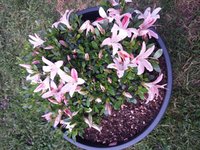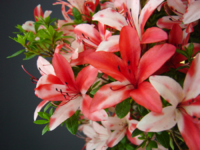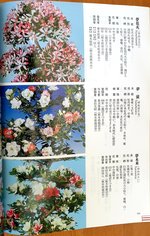I feel like we are playing a game of telephone here.Since you buried this windswept bonsai last year with the goal to make it a raft-style
LIKE a raft. Just for propagation. Ive had bad experience with azalea cuttings.If you look at the close-up, you can see many dead aerial roots, so there is some eagerness from the plants side, and I'm considering burying it like a raft and separating rooted sections next year.
But, if everything has rooted, I might not cut all of it into single pieces but maybe leave SOME together, for variety/experiment
Yeah maybe I can cut it into 2 large trunks that will be upright and some smaller rooted cuttingsYou want the trunk to layer roots so you can cut off the trunk and the original root ball?
you want this specimen to be a good raft
finalizing the raft design
No, there was a misunderstanding. Please no more talk of rafts, lol.If your goal is still a raft
When the flowers show, should I mark all branchlets that dont have the narrow petal and take them out?
The narrow type can produce all others later, right? But the others cant produce narrow?









